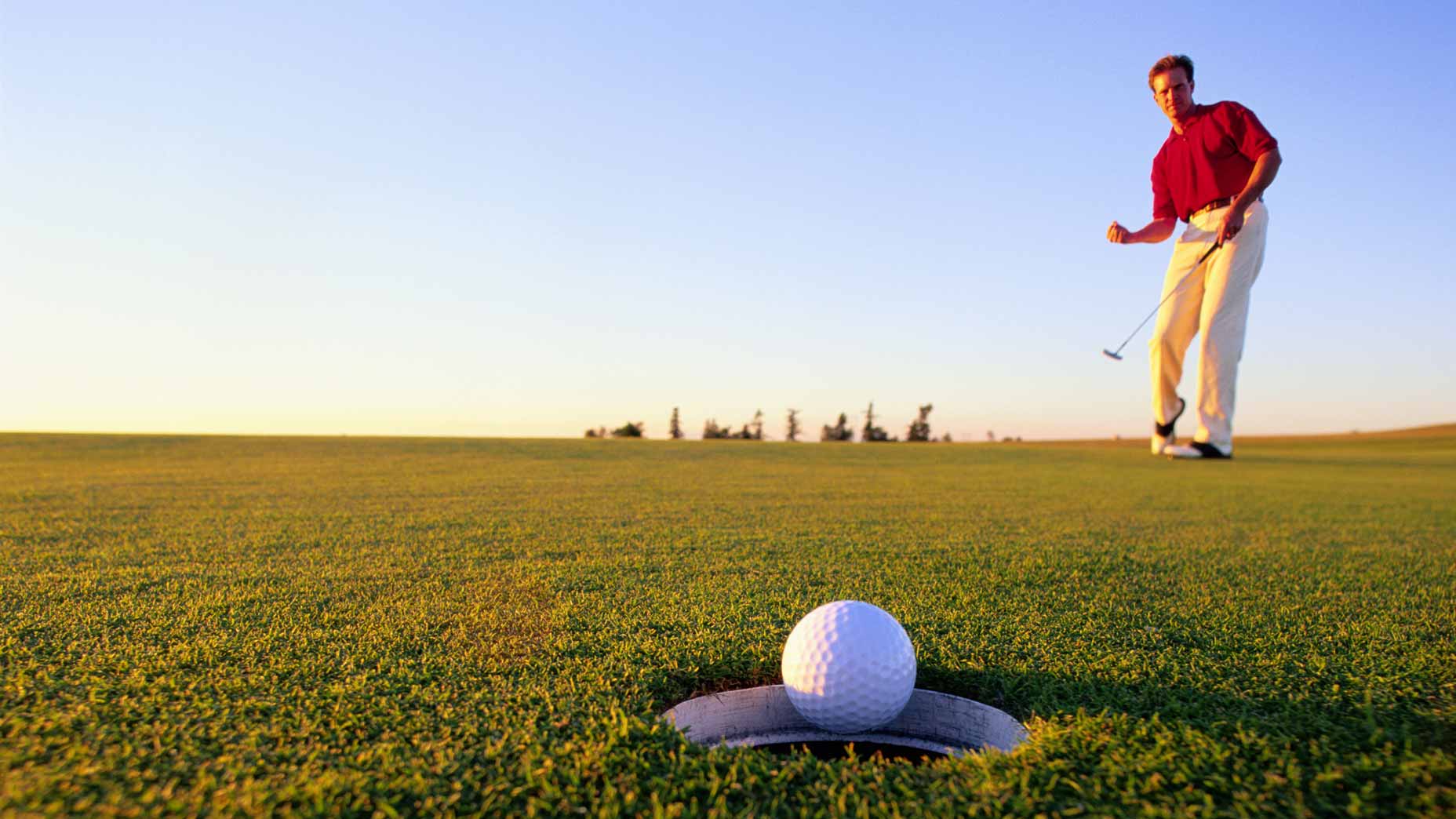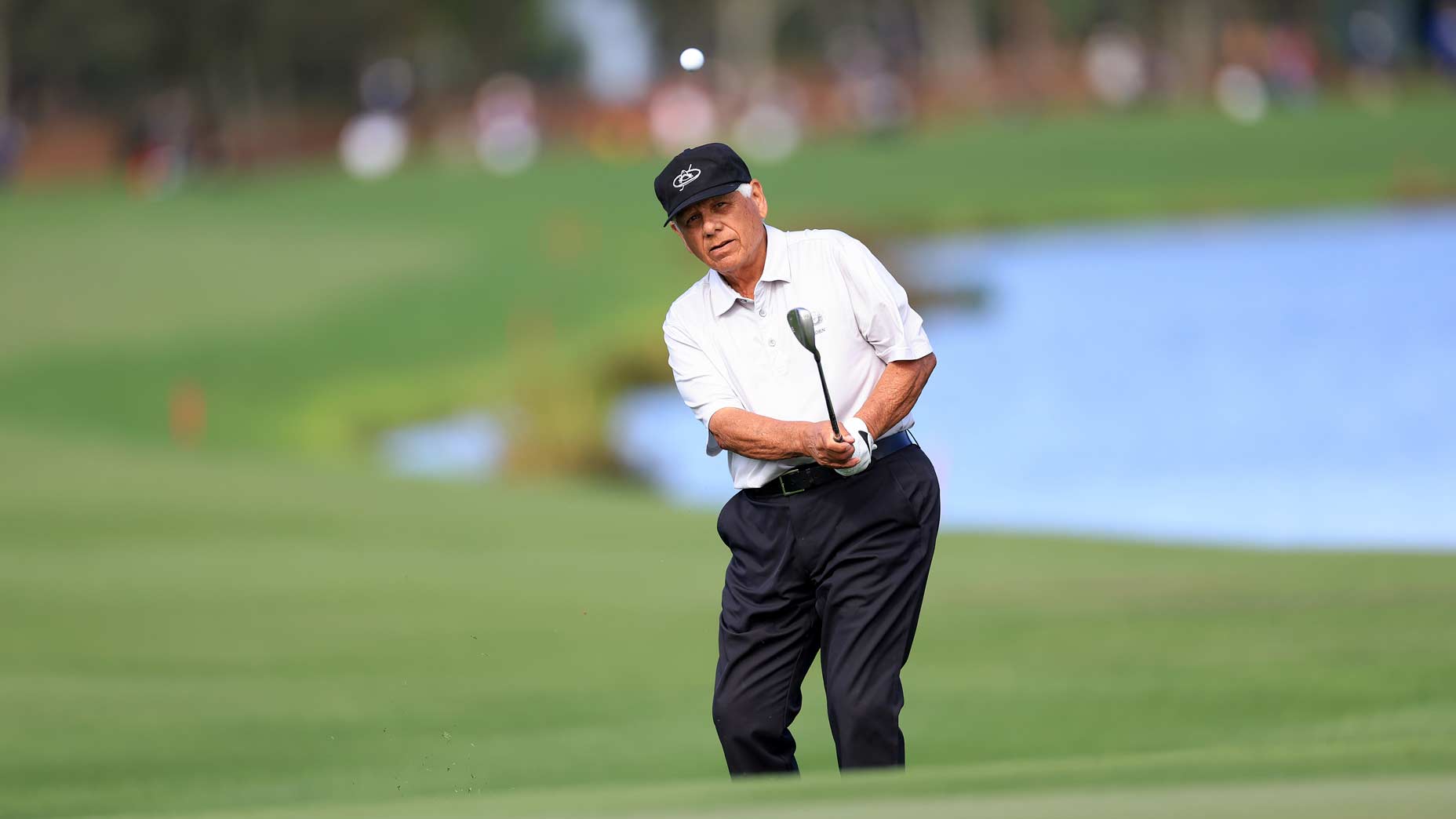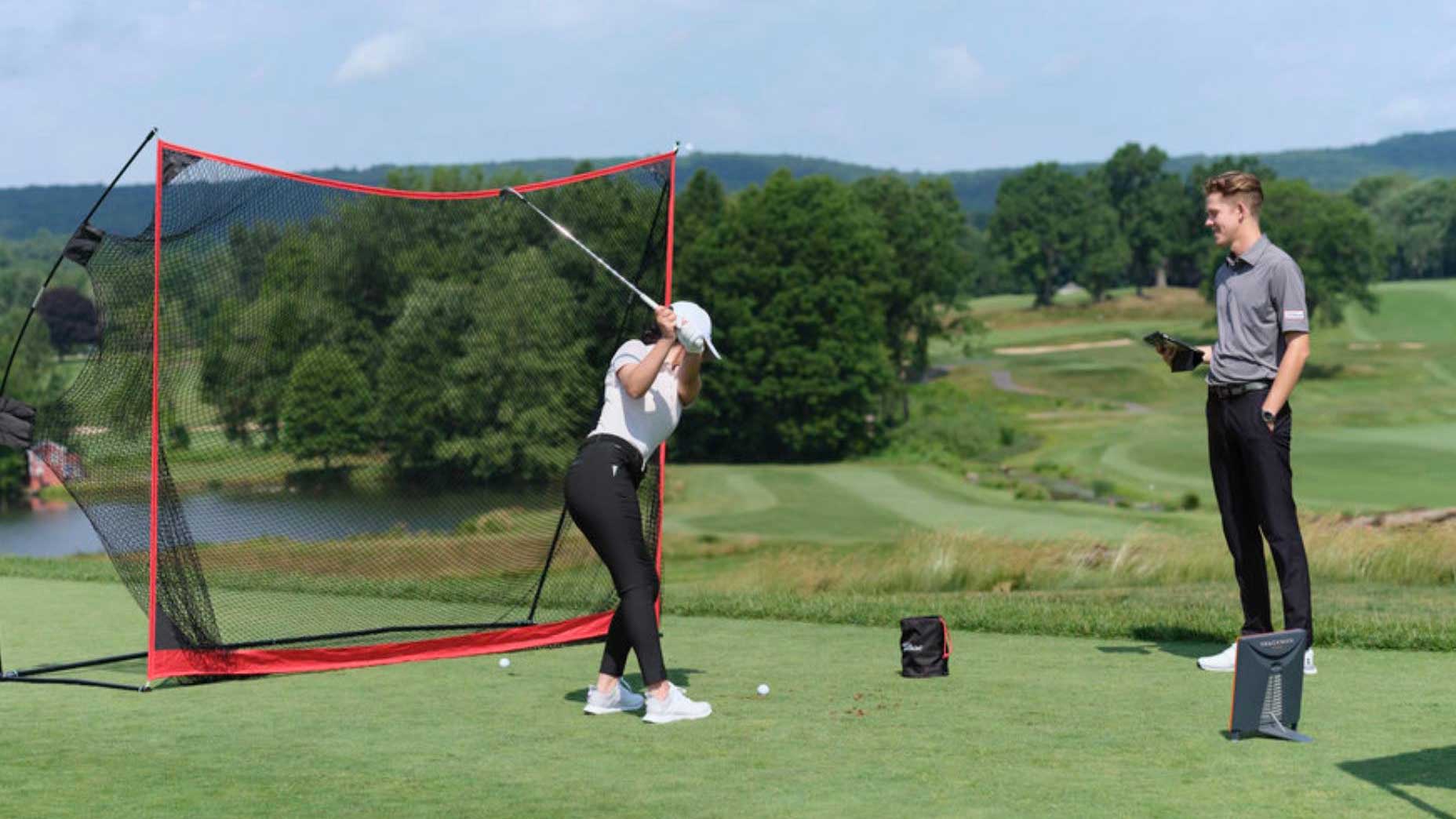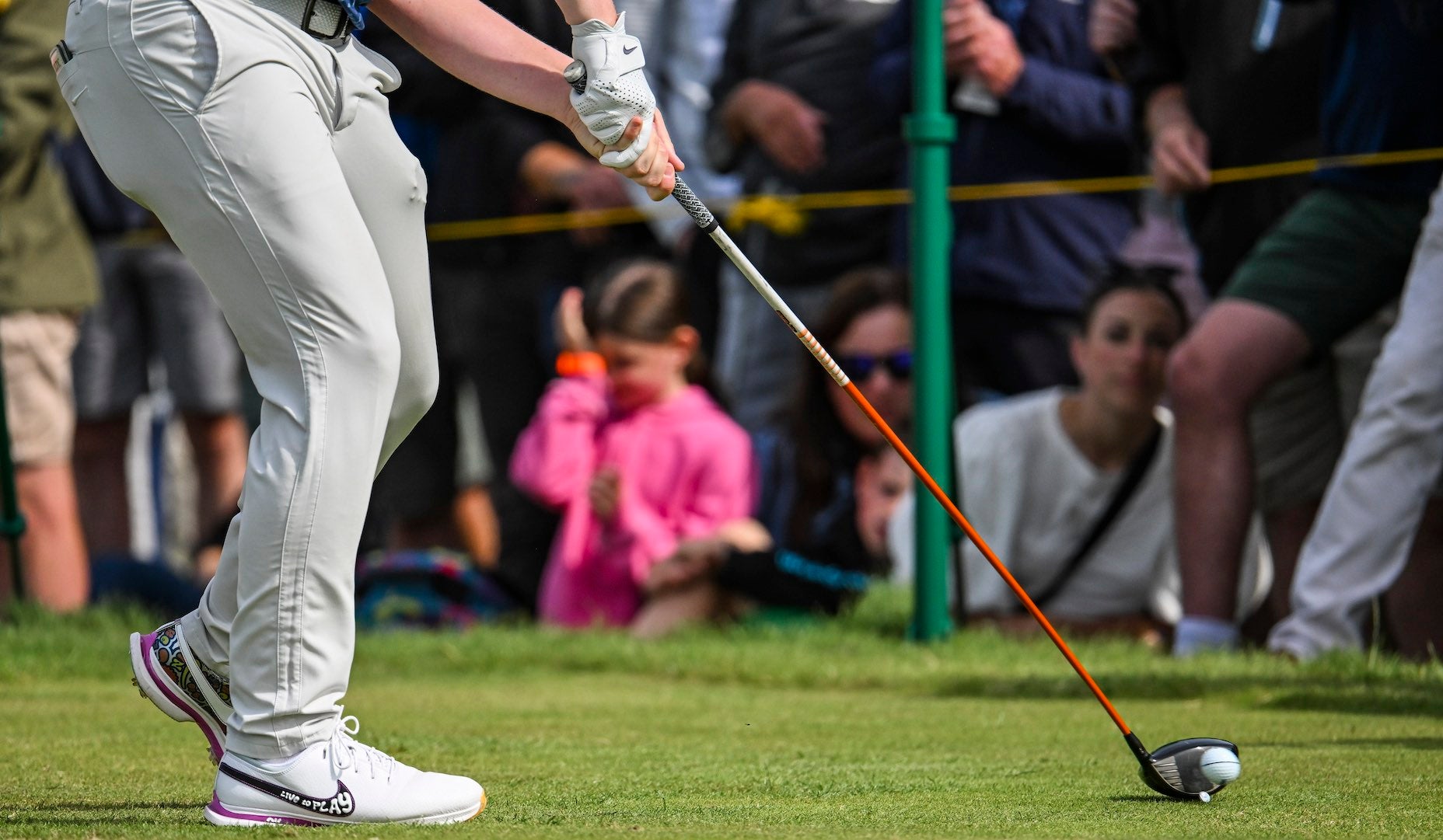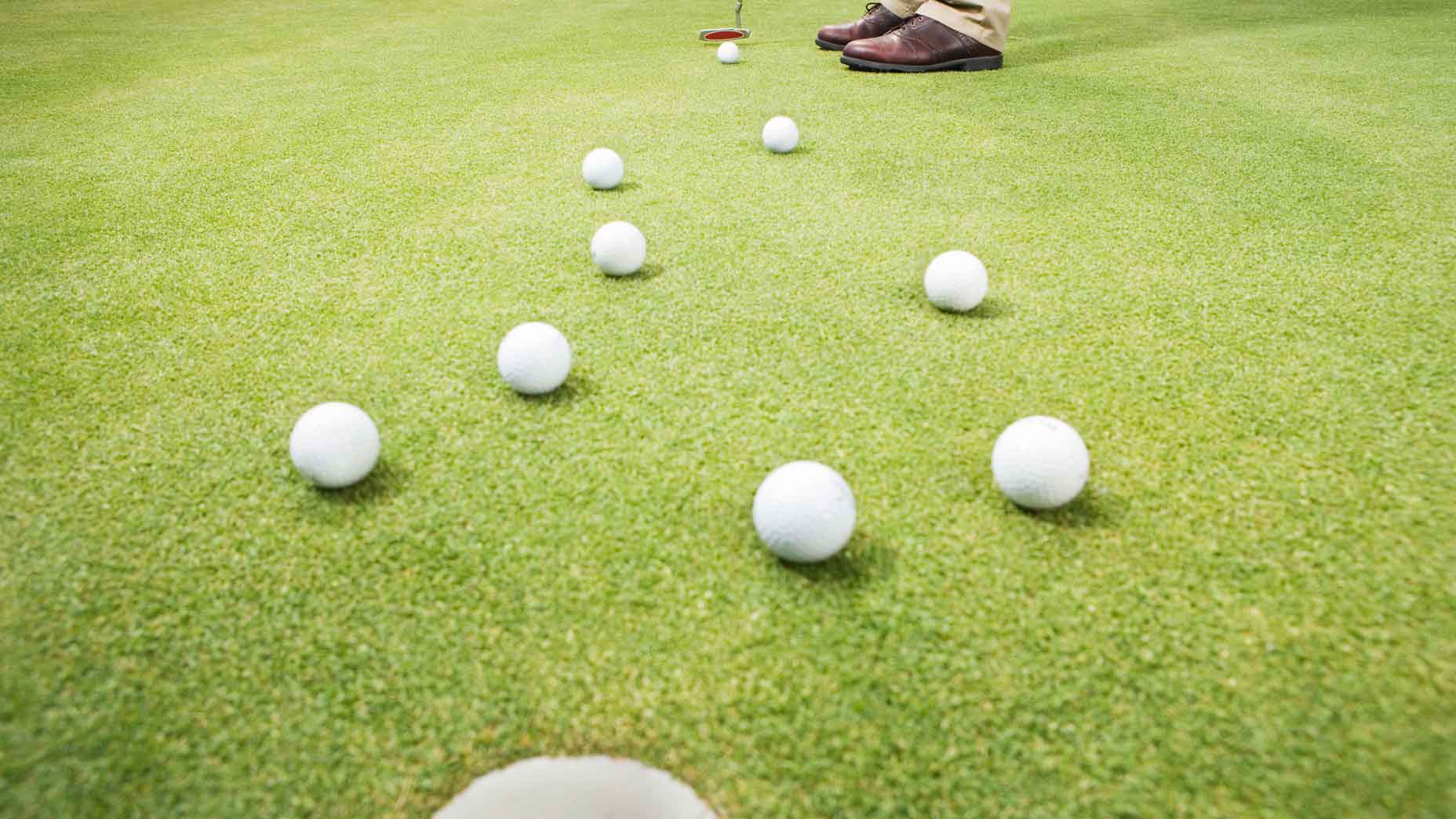Bryson DeChambeau tests ‘roll-back’ golf ball. Here’s how that went
- Share on Facebook
- Share on Twitter
- Share by Email
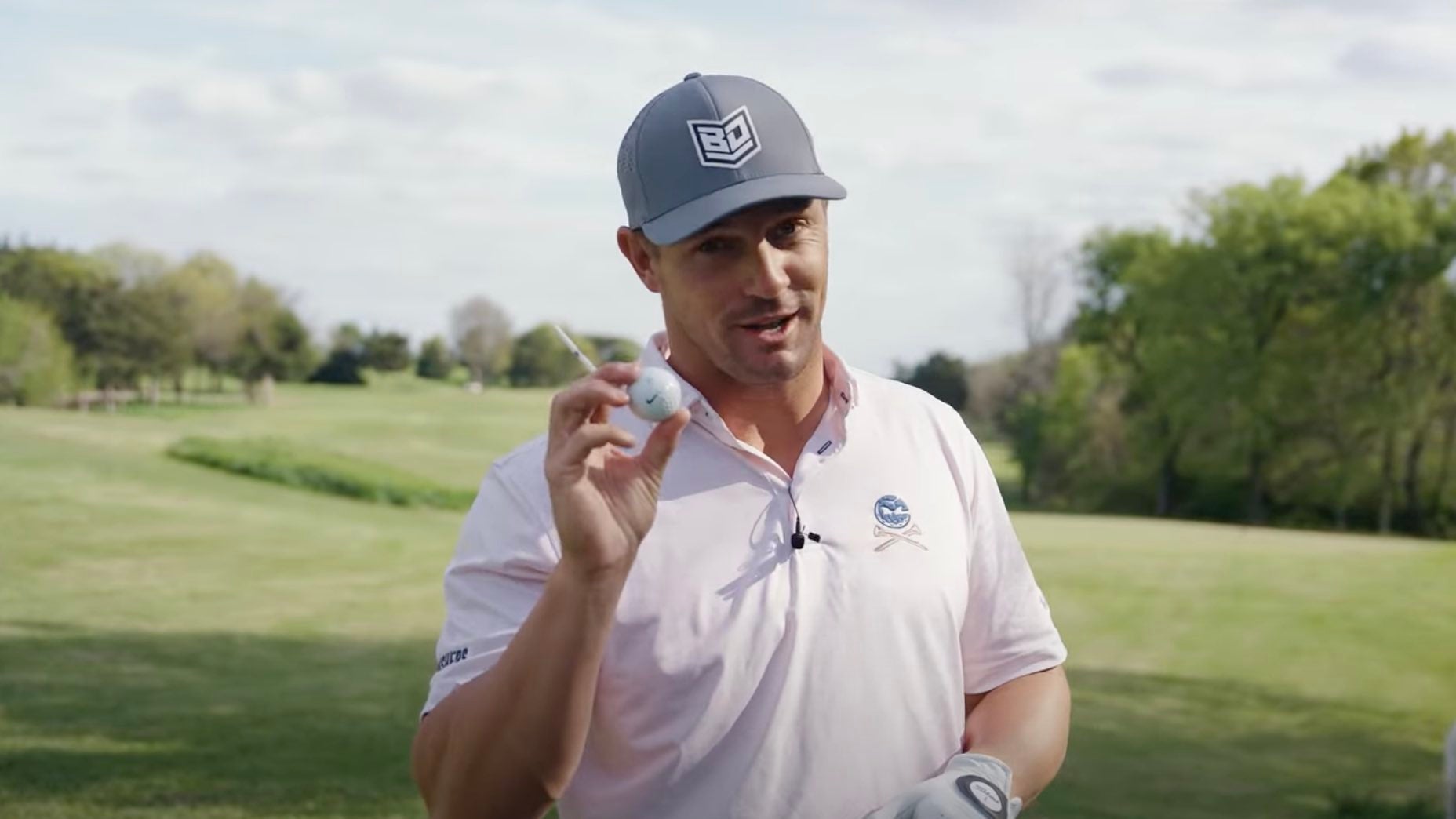
DeChambeau recently tested a throwback golf ball for a YouTube video.
Bryson DeChambeau YouTube channel.
As the golf-ball rollback debate has begun to fade, avowed anti-rollbacker Bryson DeChambeau might have just kickstarted the discourse again.
On Thursday, DeChambeau posted a video to his YouTube channel in which he plays nine holes with a 15-year-old Nike Tour One ball, which DeChambeau posits is the rough equivalent of how balls will need to be engineered under the new testing regulations beginning, for professionals, in 2028. Whether the Nike ball would indeed conform under the new testing protocol is hard to say, but regardless, watching DeChambeau play a throwback ball is still a fun watch.
DeChambeau conducted his test at Dallas National Golf Club and talked through all of the shots he hit while playing from the back tees. He makes several observations about the performance of the ball, including its propensity to curve less, fly shorter and spin more on iron shots — all of which should be taken in the context of DeChambeau’s rollback stance. In March 2023, when the governing bodies first announced rollback plans that would impact only elite players, DeChambeau called the proposal “atrocious,” adding, “I think it’s the most unimaginative, uninspiring, game-cutting thing you could do. Everybody wants to see people hit it farther. That’s part of the reason why a lot of people like what I do. It’s part of the reason a lot of people don’t like what I do.”
Proposed new ball testing refresher
Under the newly proposed ball-testing conditions, equipment manufacturers will have new golf balls tested at 125 mph clubhead speed (equivalent to 183 mph ball speed) with a spin rate of 2200 RPMs and a launch angle of 11 degrees. The current conditions, implemented 20 years ago, are 120 mph (176 mph ball speed) and 2,520 RPMs with a launch angle of 10 degrees.
Under these new test conditions, balls will still have to stay under the distance mark of 317 yards to be considered conforming.
The modifications are designed to keep up with a sport that continues to get faster, particularly at the highest level of the pro game where the average ball speed of the fastest 25 players was 183.4 mph in 2023. With a new crop of golfers with elite speed coming up the ranks, the USGA also believes the updated testing conditions reflect where the pro game is headed.
The governing bodies said the longest hitters are expected to see a reduction of as much as 13-15 yards in driving distance.
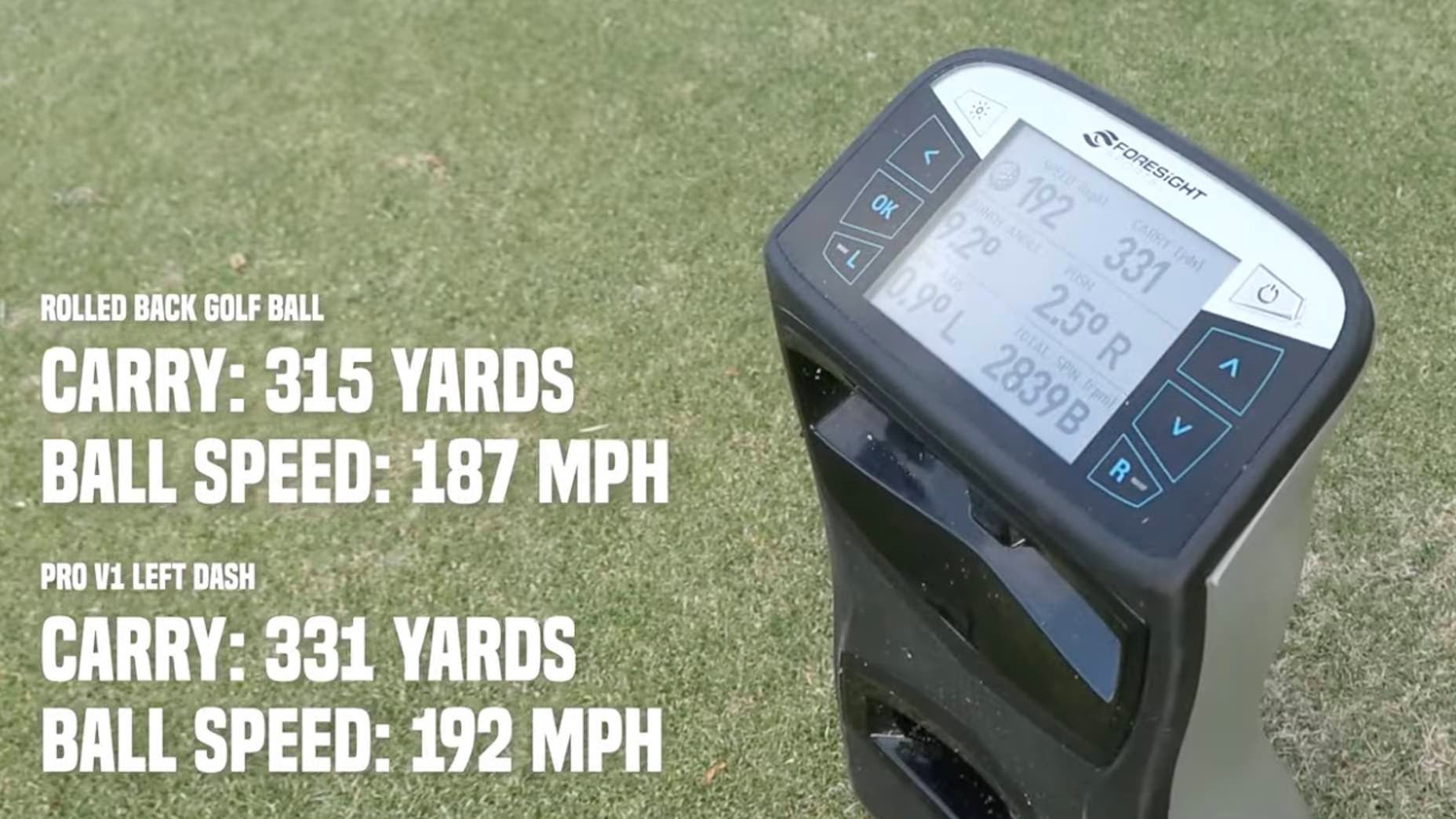
What DeChambeau got right
It is simple physics that a ball with a lower compression will produce lower ball speeds compared to one with a higher compression, especially when struck at faster clubhead speeds. DeChambeau demonstrates this several times by hitting the older and softer compression Nike against a modern Titleist Pro V1 Left Dash, which is one of the highest-compression balls currently on the market.
His driving-distance loss is generally in the 15-25 yard range, which is less than 10 percent of his average driving distance, which can be attributed to both the lower ball speeds and higher spin rates the older ball produces off the tee.

Titleist Pro V1x Left Dash Golf Balls
$54.99
View Product
One of the other things that becomes apparent on several iron shots is the amount of spin the Nike ball produces compared to DeChambeau’s Titleist, which he says “spins about 1,000 RPM less and goes five to six percent farther.”
What DeChambeau might have exaggerated
We’ll cut DeChambeau some slack considering his test wasn’t exactly scientific, but there are a couple of results that he blames solely on the ball in which other factors were involved. Namely, shots hit from the rough.
In the timestamped clip above, DeChambeau hits a fairway wood from the rough and talks about how the ball doesn’t curve as much as he’s used to seeing. Yes, the Nike ball could be curving less, but shots hit from the rough naturally spin less and fly straighter because of grass and moisture reducing friction at impact.
This happens again at the 14:40 mark when he hits a wedge from 110 yards and watches it hit the green and roll out 25 yards over the back. This type of flyer shot is still common with modern balls, and considering he hit the shot from the dry first cut, the distance the ball flew and rolled out (based on a lower spin rate) isn’t that unusual.
For what it’s worth, in what he said was his first round using this ball model, DeChambeau still shot one under for nine holes — pretty darn good. However you feel about the results of DeChambeau’s experiment, it’s hard to argue that he isn’t still one of game’s most entertaining and provocative players.
Want to overhaul your bag for 2024? Find a fitting location near you at True Spec Golf.
Latest In Gear
Our 6 favorite clubs we added to our bags in 2024

Golf.com Editor
Ryan Barath is GOLF Magazine and GOLF.com’s senior editor for equipment. He has an extensive club-fitting and -building background with more than 20 years of experience working with golfers of all skill levels, including PGA Tour players. Before joining the staff, he was the lead content strategist for Tour Experience Golf, in Toronto, Canada.

